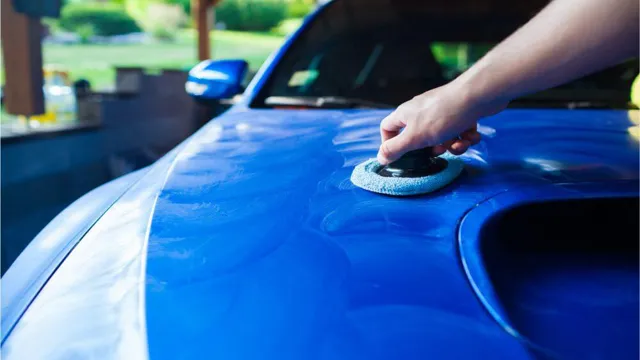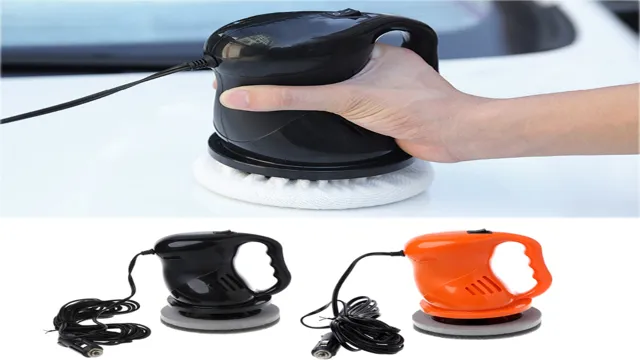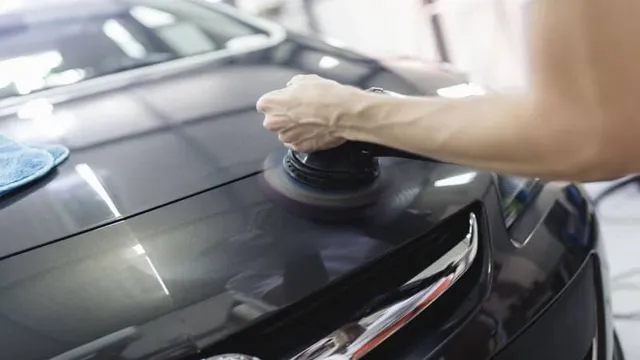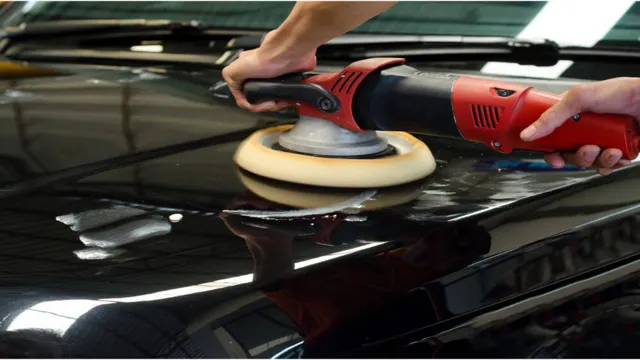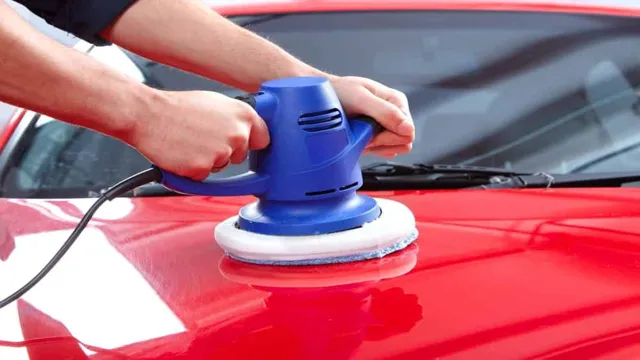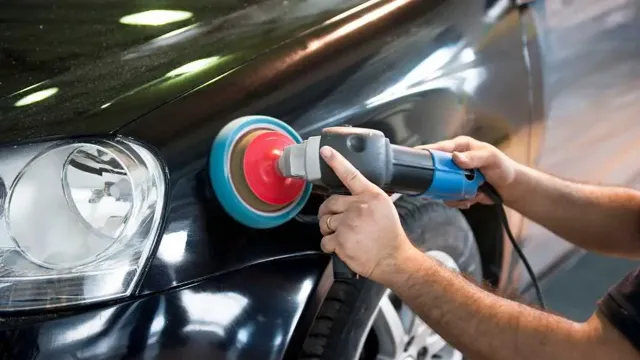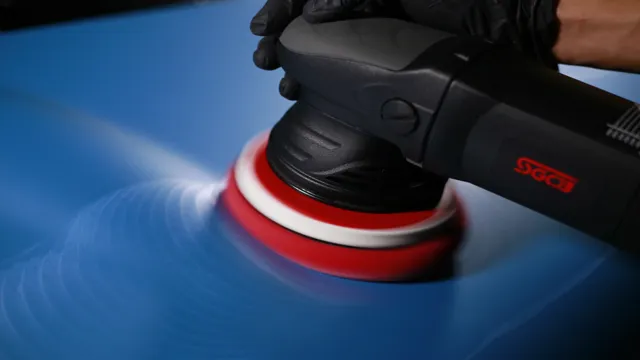How to Use a Rotary Car Polisher: The Ultimate Guide to Achieving a Showroom Shine
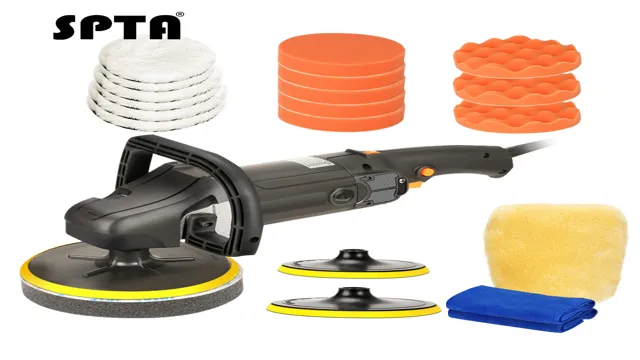
Are you tired of washing and waxing your car but not seeing that showroom shine? It might be time to invest in a rotary car polisher. This powerful tool can help you achieve a professional-grade finish in half the time it would take you with just a cloth and some elbow grease. But before you dive in and start polishing away, it’s important to know how to use this machine safely and effectively.
In this comprehensive guide, we’ll cover everything you need to know about using a rotary car polisher, from selecting the right polish to avoiding common mistakes and achieving flawless results. So grab your polisher and let’s get started!
What is a Rotary Car Polisher?
If you’re looking to give your car that highly-coveted showroom shine, you may want to consider using a rotary car polisher. This type of polisher has a spinning disk or pad that rotates in a circular motion, making it easy to buff out scratches and imperfections in your car’s paint. When using a rotary car polisher, it’s important to start with a clean surface, apply a small amount of polish to the pad, and work in small sections to avoid damaging the paint.
Always keep the pad moving, using a steady, controlled motion, and be sure to lift the polisher off the surface when you’re finished. With the right technique, a rotary car polisher can help you achieve a flawless, mirror-like finish that will make your car look like it just rolled off the showroom floor. So, go ahead and dust off that old polisher and get to work – your car deserves the best!
Definition and Function
A rotary car polisher is a powerful tool designed to remove surface imperfections and restore the shine and gloss to a vehicle’s paint. It is an essential tool for professionals and enthusiasts alike, as it helps achieve a smoother and more uniform finish than hand polishing. The rotary car polisher rotates a buffing pad at high speeds, enabling it to apply consistent pressure and remove scratches, oxidation, and other defects effectively.
Its versatile design allows it to work with various polishing pads, compounds, and accessories to achieve the desired result. Whether you’re restoring an old car or maintaining the shine on a new one, a rotary car polisher is an essential tool in your arsenal. So if you’re looking to achieve a perfect finish on your vehicle, a high-quality rotary car polisher is all you need.
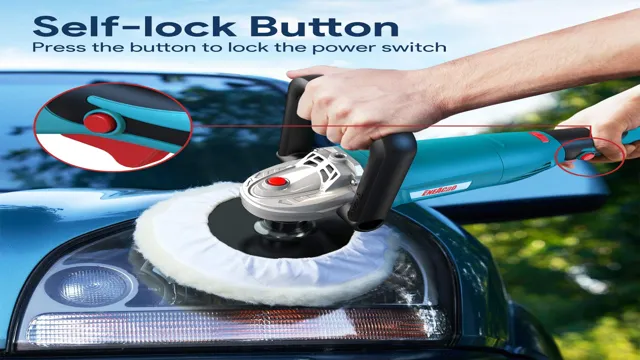
Parts of a Rotary Car Polisher
A rotary car polisher is a tool used to remove scratches, swirls, and other imperfections from the paint surface of a vehicle. It features a spinning disc that rotates on a vertical axis, powered by an electric motor. The speed of the disc can be adjusted to match the specific requirements of the job, but typically ranges from 600 to 3000 RPM.
The polishing pads are attached to the disc and are available in a variety of materials, densities, and sizes. The denser the pad, the more aggressive the polishing action. The size of the pad determines how much of the surface area is covered with each pass.
A handle is attached to the polisher, allowing for a comfortable and secure grip. In addition to the polishing pads, other accessories include backing plates, extension rods, and side handles to provide greater flexibility and control. The rotary car polisher can be a powerful and effective tool when used correctly, but it requires practice and caution to avoid damaging the surface of the vehicle.
Preparing Your Car for Polishing
Before diving into how to use a rotary car polisher, it’s crucial to prepare your car properly for the polishing process. Start by washing your car thoroughly, making sure all dirt, grime, and debris are removed. Dry it off with a microfiber towel to avoid any water spots.
Once it’s dry, inspect your car’s surface for any scratches or imperfections. Fix any visible damage with a scratch remover or compound beforehand. After that, mask off any areas you don’t want polishing, like chrome or plastic trim.
It’s also recommended to clay bar your car to remove any contaminants that may have bonded to the paint’s surface. Finally, use a paint cleaner before buffing to ensure a smooth, even surface for your polish to adhere. By taking these steps, you’ll achieve better results with your rotary car polisher and avoid any potential damage to your car’s paint surface.
Washing Your Car
Preparing Your Car for Polishing – Washing Your Car Before getting started on polishing your car, it is essential to start with a clean surface. The first step in preparing your car for polishing is to give it a thorough wash. This will remove any dirt, dust, or debris from the surface that might scratch the clear coat during the polishing process.
Use a high-quality car wash soap, a microfiber wash mitt, and a bucket of clean water to wash your car. Start from the top of the car and work your way down, rinsing the mitt after each section. Avoid using dish soap or other harsh cleaning agents as they can strip away the car’s protective coatings.
After washing your car, thoroughly rinse it with clean water to remove any soap residues. Let the car dry completely before moving on to the next step. Only after your car is fully dry, you can start polishing it to a high shine.
Remember, preparation is crucial for achieving the best results while polishing your car.
Drying Your Car
Drying your car after a wash is an essential step, especially before you start polishing it. One of the biggest mistakes that many people make is not drying their cars properly, which can lead to water spots and streaks. To prevent this, start by using a clean, soft, and absorbent microfiber towel to remove any excess water.
Begin from the top of the car and work your way down to avoid any water droplets falling on the areas you have already dried. You can also use a water blade or a blower to remove even more water efficiently. Make sure to pay special attention to the areas around the door handles, mirrors, and seams, where water tends to hide.
Once you’re done, give your car a final wipe down to ensure it’s completely dry before moving onto the next step. Remember, proper drying is crucial for achieving a flawless finish on your car.
Decontaminating Your Car’s Paint
When it comes to preparing your car for polishing, decontaminating its paint is a crucial step. Over time, your car’s paint can accumulate various contaminants such as tar, bugs, and other debris. These contaminants not only make your car look dirty but can also cause damage to your paint by eating away at its protective layer.
To decontaminate your car’s paint, you can use a clay bar or a chemical decontaminant. A clay bar works by pulling out the contaminants from your car’s paint, while a chemical decontaminant breaks down the contaminants, making them easier to remove. Whichever method you choose, ensure that your car is clean before starting the decontamination process.
After decontaminating your car’s paint, you will notice a significant difference in the smoothness of its surface. The prep work you put into decontaminating your car’s paint will pay off once you begin polishing, giving your vehicle a much brighter and clearer finish.
Polishing Your Car with a Rotary Car Polisher
If you’re looking for a way to give your car a shiny, polished finish, a rotary car polisher may be just the tool you need. Before you begin, make sure you have the right supplies, including a quality polishing compound and a foam or wool pad that’s appropriate for your vehicle’s paint job. Then, start by cleaning the car thoroughly and removing any scratches or swirl marks.
Once that’s done, it’s time to use the rotary polisher. Start with a low speed and work in small sections, applying the polish in a circular motion until the area is evenly covered. Then, increase the speed and work the polish in a back-and-forth motion until the surface is smooth and shiny.
Be sure to work carefully and avoid overheating the paint, as this could cause serious damage. With a little patience and practice, you’ll soon be able to achieve a professional-looking finish with your rotary car polisher!
Choosing the Right Polish and Pad
When it comes to polishing your car with a rotary car polisher, choosing the right polish and pad is crucial. It’s important to select a polish that matches the specific needs of your car, such as the type of paint and extent of scratches or swirl marks. A heavy-cut compound can help remove deeper imperfections, while a fine polish can be used for light scratches and to restore shine.
As for pads, consider their softness or hardness, thickness, and material. A softer pad is ideal for applying polish, while a stiffer pad may be better for heavy cutting. Using the correct combination of polish and pad will not only enhance the results but also prevent potential damage to your car’s paint.
So take the time to research and experiment with different options to achieve the best outcome for your vehicle.
Applying Polish to the Pad
When it comes to getting that perfect shine on your car, using a rotary car polisher can be a game-changer. But how do you apply polish to the pad and get the best results? First, add a small amount of polish to the pad. It’s important not to overload the pad as this can lead to uneven application and may waste product.
Spread the polish evenly across the pad before placing it on the surface of the car. Attach the polisher to the pad and turn it on, starting with a low speed. Move the polisher in a circular motion, working in small sections at a time.
Apply a little pressure to the pad as you work for optimal results. Once finished, wipe down the surface with a microfiber towel to remove any excess polish. By following these steps, you can achieve a flawless finish on your car and have heads turning wherever you go.
Using the Rotary Car Polisher
If you want to get the perfect shine on your car’s surface, using a rotary car polisher can make the task easier. This tool operates by rotating the polishing pad in a circular motion to remove imperfections and add a high gloss finish. Before you start, ensure the paint surface is clean and dry.
You may need to use a clay bar to eliminate stubborn contaminants like dirt and tar. If you’re polishing for the first time, always start with a less aggressive pad and polish to avoid damaging the paint. Gradually increase the pad’s aggressiveness until you get your desired result.
Move the pad slowly over the surface, making sure you cover every section without leaving any streaks. Finally, wipe the surface with a microfiber cloth to remove any remaining residue. With a bit of practice, you can achieve excellent results and have your ride looking like it just rolled out of the showroom.
Polishing Technique
If you’re looking to give your car that showroom shine, then it’s time to break out the rotary car polisher. Polishing your car with a rotary car polisher is a great way to achieve a professional-grade finish. But before you can get started, you need to make sure you have the right tools and materials.
First, you’ll need a rotary car polisher, as well as polishing pads and polishing compound. Once you have all of your tools and materials, it’s time to get started. Begin by cleaning the surface of your car to remove any dirt or debris.
Then, apply a small amount of polishing compound to your polishing pad and work it into the surface of your car. Be sure to use a slow and steady motion to avoid creating swirl marks. Once you’ve finished polishing the entire surface of your car, wipe it down with a clean microfiber cloth.
With a little practice, you’ll be able to give your car a professional-grade finish in no time!
Safety Tips
If you’re looking to achieve a perfectly polished, shiny and scratch-free automobile, a rotary car polisher can be a great tool to use. However, using this tool without proper safety precautions can lead to disastrous results. To ensure you’re using your rotary car polisher safely, start by carefully reading the manufacturer’s instructions.
It’s also important to wear gloves, safety glasses, and a dust mask to protect your skin, eyes, and lungs from dust and debris that can be kicked up during the polishing process. Additionally, make sure you have a sturdy grip on the polisher and use gentle pressure to prevent it from damaging your car’s surface. Lastly, never use the polisher near flammable substances or in an area with poor ventilation.
With these tips in mind, you can achieve a beautiful shine on your car while keeping yourself safe.
Protecting Yourself
When it comes to protecting yourself, there are some safety tips that you should always keep in mind. First and foremost, always trust your instincts. If a situation feels wrong or dangerous, get out of it immediately.
Also, make sure you always carry your phone with you and keep it fully charged. In addition, it’s a good idea to let someone know where you’re going and when you expect to be back. This way, if anything does happen, someone will know where to start looking for you.
When walking alone at night, try to stay in well-lit areas and avoid shortcuts through dark alleys or roads. Finally, consider taking a self-defense class to give yourself the tools and confidence you need to protect yourself if necessary. Remember, taking these simple precautions can go a long way in helping you stay safe.
Protecting Your Car
As a car owner, keeping your vehicle safe is of utmost importance. Here are some safety tips to help you protect your car from theft or damage. Firstly, always lock your car doors with your key or remote to prevent unauthorized access.
It may seem obvious, but leaving your car doors unlocked is a common mistake that can have serious consequences. Secondly, be mindful of where you park your car. Choose a well-lit area and avoid parking in secluded spots.
If possible, park your car in a garage or a secure area, particularly at night. Thirdly, consider investing in an anti-theft system such as an alarm or a GPS tracking device. These measures can deter thieves and help you recover your car in case of theft.
Lastly, do not leave valuable items in plain sight inside your car. Keep them out of sight or take them with you when you leave your car. By following these simple steps, you can help keep your car safe and secure.
Conclusion
In conclusion, using a rotary car polisher is like dancing with your car. You need to lead and gently guide your machine over the surfaces, being mindful of the right speed and pressure. Just like a dance partner, it takes practice, patience, and finesse to achieve a flawless finish.
So, turn up the tunes, put your polisher on the wheels, and let’s boogie!”
FAQs
What is a rotary car polisher?
A rotary car polisher is a tool that is used to polish a car’s surface with a high-speed rotary motion.
How does a rotary car polisher work?
A rotary car polisher works by spinning a polishing pad at a high speed, which generates heat and friction that helps remove scratches, swirls, and other imperfections from the car’s surface.
What are the benefits of using a rotary car polisher?
Using a rotary car polisher can help to restore a car’s finish, remove minor blemishes and imperfections, and improve the overall appearance of the vehicle.
Is it difficult to use a rotary car polisher?
Using a rotary car polisher can take some practice, but with the right technique and tools, it can be a relatively easy process.
What safety measures should I take when using a rotary car polisher?
When using a rotary car polisher, it is important to wear eye and ear protection, use proper ventilation, and follow all safety instructions provided by the manufacturer.
What type of polishing pads should I use with my rotary car polisher?
Depending on the type of job you are doing, you may need to use different types of polishing pads, such as foam, wool, or microfiber.
How often should I use a rotary car polisher on my car?
It is recommended to use a rotary car polisher on your car no more than twice a year, as excessive polishing can damage the clear coat and paint of the vehicle.

